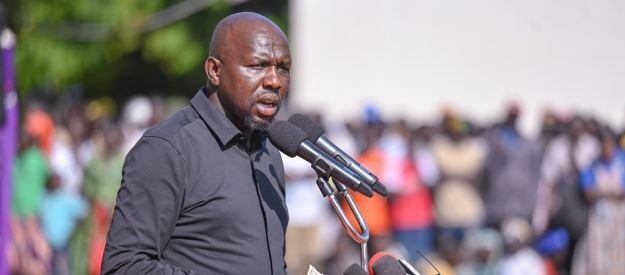Mining is one of the sectors that have the greatest potential to catapult the country’s economy but it has received the least investment and is also one of the least understood.
This is according to Mining, Blue Economy and Maritime Affairs CS Salim Mvurya
Mvurya on Tuesday said the government has however initiated a wave of reforms that will help project the sector to the required heights.
“Mining is not a new vocabulary in our country. But it has received the least investment. Therefore, we are trying to inspire the potential of our county in data,” the CS said.
He spoke at the launch of the four-day 5th Technical University of Mombasa multi-disciplinary conference and innovation week at the institution.
Mvurya said mining data in the country is still very scarce and called on institutions of higher learning like TUM to invest more in research about mining and minerals.
“When you ask people the kind of minerals you can find in Taita Taveta, for example, they will name maybe only two,” the CS said.
TUM Vice Chancellor Prof Leila Abubakar said TUM is focused on providing industry-led training to both churn out proper graduates and also create employers and not only job seekers.
“This underscores the importance of collaboration, creativity and forward-thinking approaches in addressing our complex challenges that face the country today,” Abubakar said.
She said innovative solutions that transcend traditional boundaries are required to solve the myriad of modern-day challenges that rock the country and beyond.
The VC said cross-sector innovation involves bringing together individuals, organizations and institutions from different fields to collaborate in solving common challenges by combining knowledge, resources and perspectives from various sectors to develop holistic and sustainable solutions that have far-reaching impacts.
“Our education system must nurture a culture of innovations and entrepreneurship. We must allow our students to convert ideas into invoices,” he said.
A geo-survey of all the 47 counties has revealed 970 mineral occurrences across the country.
A "mineral occurrence" is a concentration of a mineral - usually, but not necessarily, considered in terms of some commodity, such as copper, barite or gold - that is considered valuable or that is of scientific or technical interest.
After a mineral occurrence, which is only symbolic and does not in itself mean there are enough minerals for mining, ground truthing is done to ascertain the type and amount of minerals there are at a particular place.
“We have our teams out there to do ground truthing and by June, they will have done 24 counties. What we have prioritized are the strategic and critical minerals that are of high value,” CS Mvurya said.
Some of the minerals include coltan (a combination of columbite and tantalum), copper (which hosts quite several other minerals), graphite, chromite, and lithium, among others.
“There are around 14 of them across the country. After the ground-truthing, we can now confirm their economic value and bring in investment that will be of key importance to our country,” Mvurya said.
He said these processes of geo-survey and ground truthing require that universities focus on training related to minerals.
He noted that at the moment, very few universities offer such training including Taita Taveta University which is now trying to develop a course on the same.
“But generally if you wanted geologists, the numbers that we require, we have a challenge. The same way if you wanted marine engineers there is also a big challenge,” Mvurya said.
He called on institutions of higher learning to blend courses with industries to get experts in mining and geology.
Prof Abubakar said TUM is working on introducing more courses that will tackle current-day challenges.
She noted that the mining sector is one of the areas that TUM is considering keenly.
She said investing in capacity building and skill development is what TUM has undertaken to do to help solve some of the problems that Kenya faces.
Mvurya said the government is also focusing on improving sampling and testing of minerals.
At the moment, testing can only be done in Nairobi or Tanzania.
“When you want to test tsavorite found in Tsavo area of Taita Taveta, you have to take it to either Nairobi or Tanzania. So, we are upgrading the lab in Nairobi to acquire international certification but we are also decentralizing the labs across the region,” the CS said.
One lab will be established in Mombasa and another in Kwale counties.
The decentralization of sampling and testing sites will lower costs.
The CS said the Cabinet has also approved the formation of the Mining Police Unit (MPU) to curb illegal mining across the country.
“In the next few years, the mining frontier will be very different because we are now focusing more on value addition and mineral processing,” Mvurya said.
This has inspired investors.
For instance, in Elgeyo Marakwet, a Sh4.8 billion fluorspar mining and processing project is about to be established.
“In Western we are groundbreaking a Sh5.8 billion gold processing factory which we have concluded the paperwork. We are also doing a granite processing plant in Vihiga county at Sh2.5 billion,” Mvurya said.
As the government continues to map the country, the focus now shifts to the copper belt from Makueni county through to Kitui, Tharaka and Tana River counties to see how to inspire investment.
















